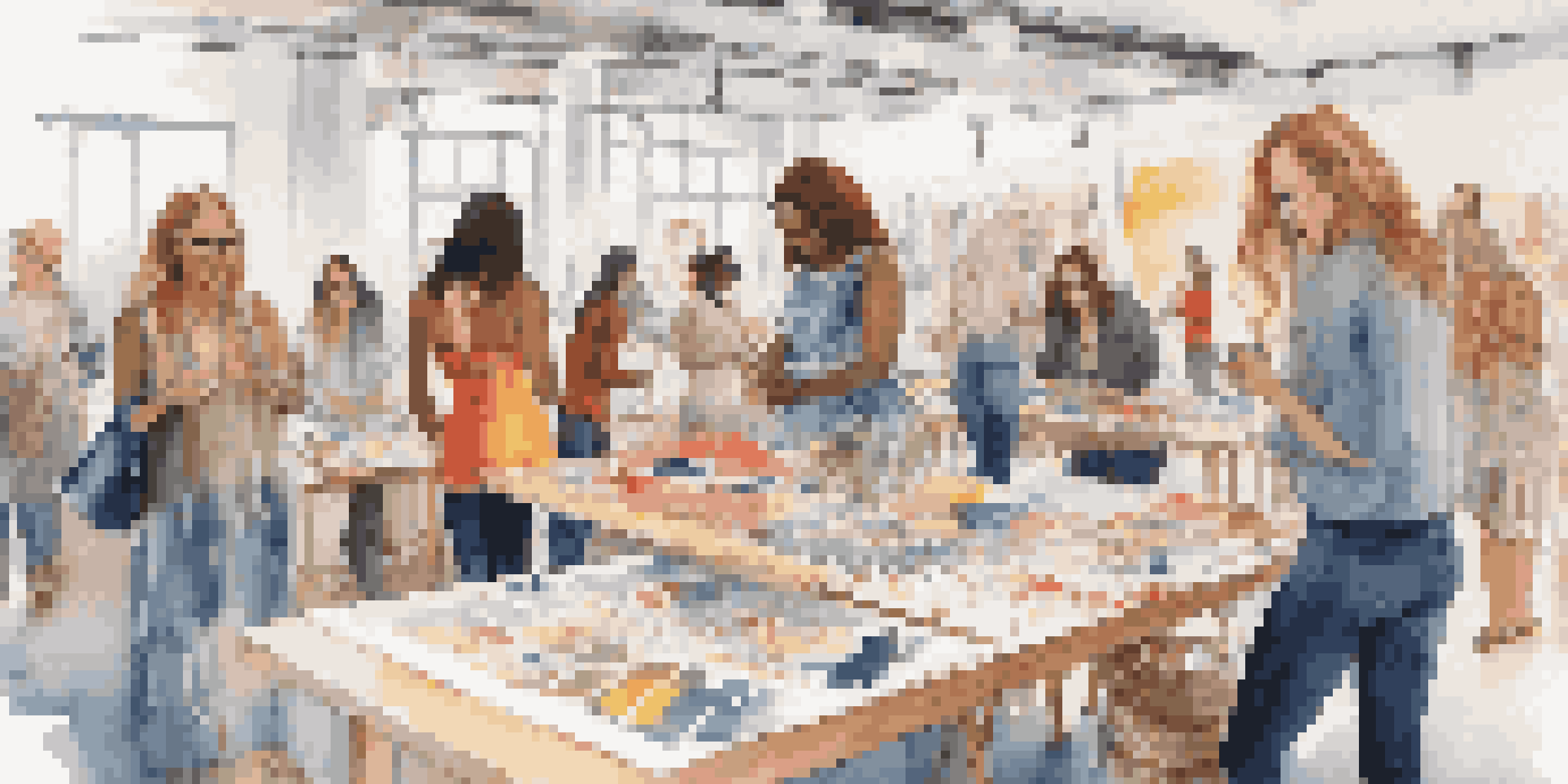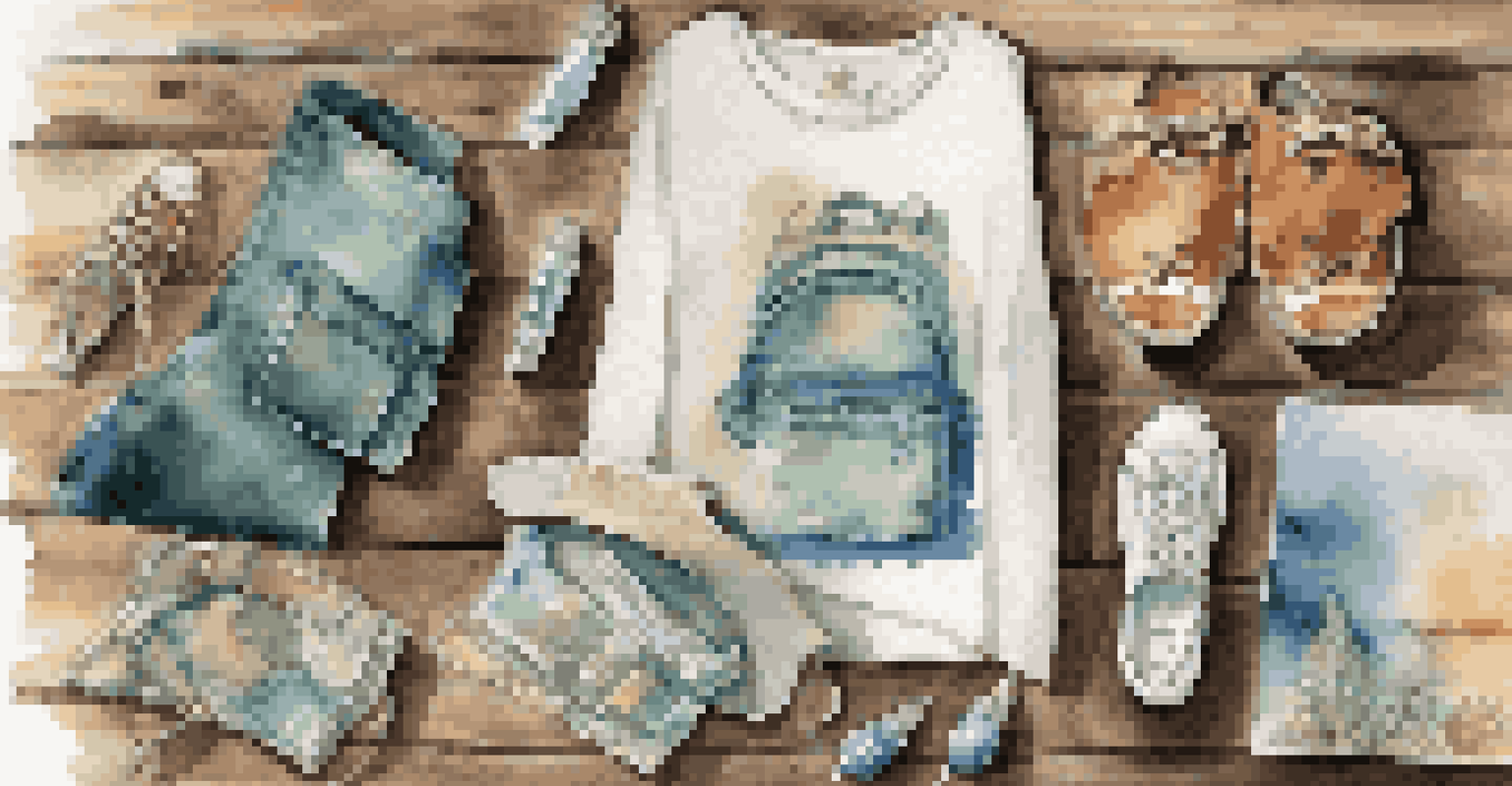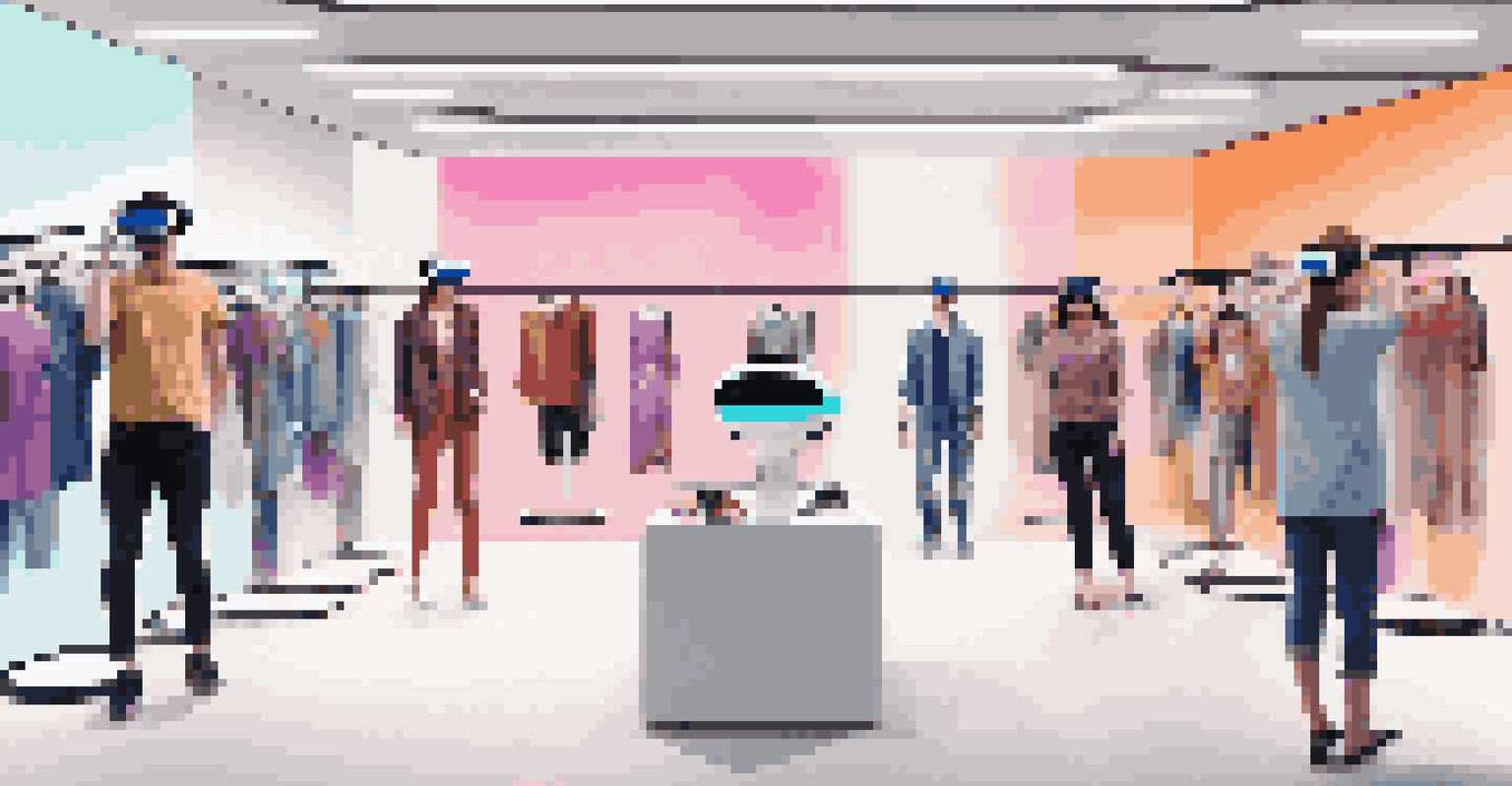The Future of Collaborative Fashion: Trends to Watch

The Rise of Sustainable Fashion Collaborations
Sustainability is no longer just a buzzword; it's a movement that's reshaping the fashion industry. Collaborative efforts between brands and eco-conscious designers are creating innovative solutions that prioritize the planet. For example, partnerships like that of Adidas and Parley for the Oceans have transformed ocean plastic into stylish sneakers, showcasing how fashion can contribute to sustainability.
Fashion is the armor to survive the reality of everyday life.
As consumers become increasingly aware of their environmental impact, they seek brands that align with their values. This growing demand fuels collaborations focused on sustainable practices, from using eco-friendly materials to implementing ethical labor practices. The future of fashion will see more brands joining forces to create collections that not only look good but also do good.
We can expect to see a rise in transparency as brands share their sustainability stories. Collaborations will highlight the journey of materials from source to shelf, reinforcing the value of informed consumer choices. Ultimately, these partnerships will pave the way for a more responsible fashion landscape.
Technology as a Catalyst for Collaborative Design
Technology continues to revolutionize the fashion industry, providing tools that enhance collaborative design. Virtual reality (VR) and augmented reality (AR) are not just for gaming anymore; they're becoming essential in fashion. Imagine trying on clothes virtually with friends from the comfort of your home, making the shopping experience interactive and fun.

Furthermore, platforms like digital design software allow designers from around the globe to collaborate in real time. This democratizes fashion design, enabling diverse voices and perspectives to influence trends. As a result, we can expect to see unique collections that reflect a broader range of cultural influences.
Sustainable Fashion Gains Momentum
Collaborations between brands and eco-conscious designers are driving innovative solutions that prioritize sustainability in fashion.
The integration of artificial intelligence (AI) in fashion is also noteworthy. AI can analyze trends and consumer preferences, helping brands collaborate more effectively. This technology-driven approach will foster innovative designs that resonate with consumers and keep pace with their ever-changing tastes.
Community-Driven Fashion Initiatives
Community engagement is becoming a cornerstone of collaborative fashion. Local designers are teaming up with community members to create pieces that reflect shared values and cultural heritage. This grassroots approach not only supports local economies but also fosters a sense of belonging and pride among participants.
Sustainability is not a trend, it's a responsibility.
One inspiring example is the work of organizations that invite community members to contribute their ideas or even materials for fashion projects. These initiatives create a platform for underrepresented voices, allowing them to express their creativity. The outcome is often a collection that tells a rich, multifaceted story—something that mass-produced items simply cannot achieve.
As consumers increasingly seek authenticity in their purchases, community-driven fashion will gain traction. Collaborations rooted in local culture will appeal to those looking for meaningful connections with the brands they support. This trend signals a shift toward valuing individuality over uniformity in fashion.
The Influence of Social Media on Collaborative Fashion
Social media is a powerful tool for shaping fashion trends and fostering collaborations. Platforms like Instagram and TikTok have enabled designers and brands to showcase their work to a global audience. This visibility not only helps them reach potential customers but also attracts collaborators from around the world.
Influencers and fashion enthusiasts are now integral to the collaborative process. Their ability to connect with audiences can turn a simple design project into a viral sensation. For example, when a popular influencer partners with a brand, the collaboration often leads to increased engagement and sales, demonstrating the value of social media in modern fashion.
Tech Transforms Fashion Design
Advancements in technology like AI, VR, and AR are enhancing collaborative design processes and democratizing fashion.
As social media continues to evolve, we can expect to see more interactive and engaging collaborations. Live-streamed design sessions, polls for consumer input, and behind-the-scenes content will become increasingly common, allowing consumers to feel genuinely involved in the creative process. This shift will strengthen the bond between brands and their audiences.
Fashion Tech Collaborations: Merging Style with Innovation
The intersection of fashion and technology is a hotbed for collaboration, with brands exploring new materials and functionalities. Wearable tech, like smartwatches and fitness trackers, is no longer just about functionality; it's about style too. Collaborations between tech companies and fashion designers are creating chic products that blend aesthetics with technology.
For instance, the partnership between Google and Levi's resulted in the innovative Commuter Jacket, which allows wearers to control their devices with simple gestures. This fusion of fashion and tech caters to the modern consumer's desire for convenience without sacrificing style. Expect to see more such groundbreaking collaborations in the future.
As the demand for smart clothing grows, we can anticipate a wider variety of tech-driven fashion items. From jackets that charge your phone to fabrics that monitor your health, the potential is limitless. These collaborations will not only enhance the functionality of clothing but also redefine how we perceive fashion in our daily lives.
Inclusivity in Collaborative Fashion Trends
Inclusivity is becoming a guiding principle in collaborative fashion, with brands recognizing the importance of representing diverse body types and identities. Collaborations that prioritize inclusivity challenge traditional fashion norms and create space for everyone to express their style. This trend is not just a passing fad; it's reshaping the industry's landscape.
For example, collaborations between plus-size influencers and mainstream brands are gaining traction. These partnerships not only expand size ranges but also validate the experiences of those often overlooked in fashion. As consumers demand representation, brands are responding by joining forces with diverse voices to create collections that resonate with a broader audience.
Inclusivity Shapes Fashion Trends
Collaborations focusing on diverse body types and identities are reshaping the fashion landscape and promoting representation.
As we look ahead, we can expect collaborations that celebrate individuality and diversity to flourish. The fashion industry will increasingly embrace a more inclusive approach, reflecting the rich tapestry of identities and experiences in society. This shift is not only beneficial for consumers but also for brands looking to connect with a wider market.
The Future of Collaborative Fashion Events
Fashion events are evolving beyond traditional runway shows to embrace collaborative formats. The future will see more interactive and participatory experiences, where consumers can engage directly with designers and brands. Imagine a fashion festival where attendees can co-create pieces alongside their favorite brands—this is the direction in which the industry is heading.
These events will not only showcase new collections but also serve as platforms for education and community-building. Workshops, panel discussions, and hands-on activities will foster a deeper understanding of the design process and the values behind collaborative fashion. This engagement will help consumers feel more connected to the products they purchase.

As we embrace this new era of fashion events, brands will leverage technology to enhance the experience. Virtual events and hybrid models will allow broader access, ensuring that anyone interested in fashion can participate. The future of collaborative fashion events promises to be more inclusive, engaging, and innovative than ever before.